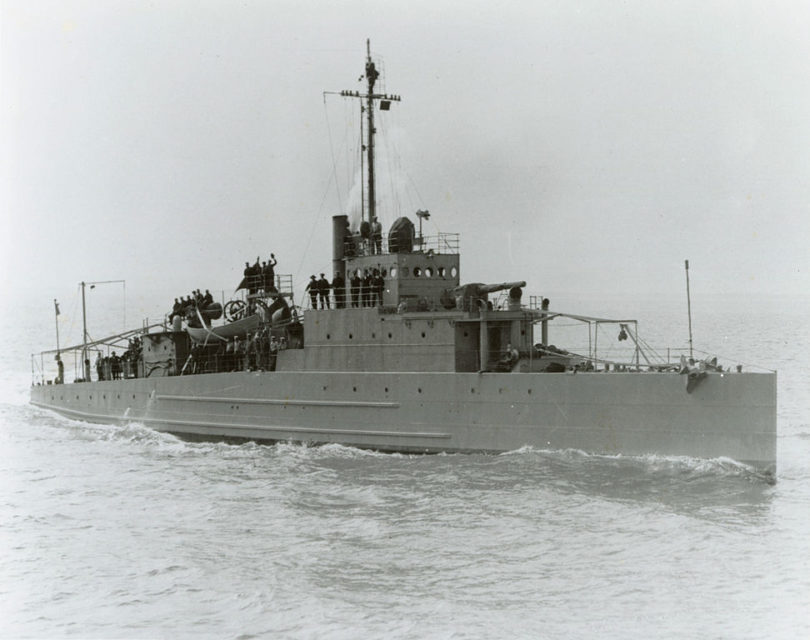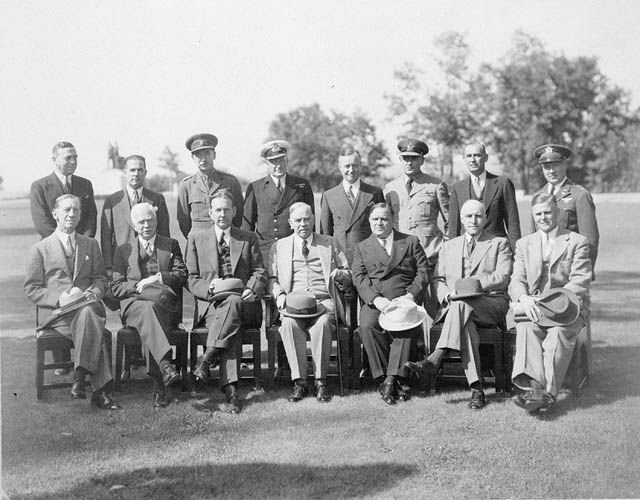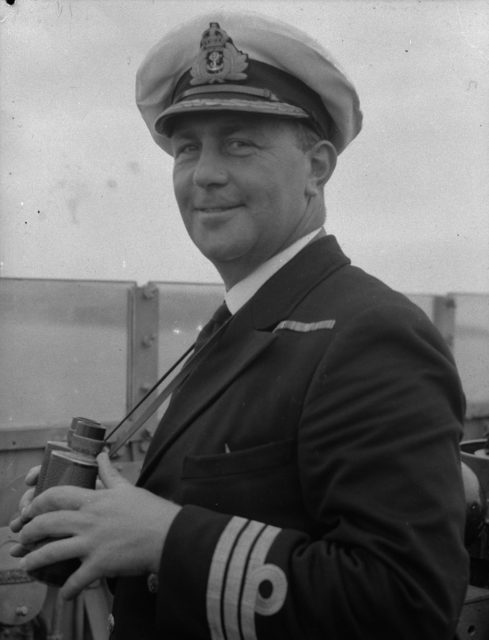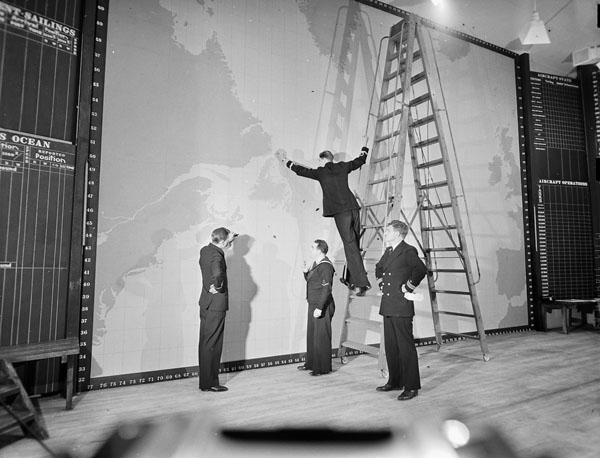Editor’s Note: This series was originally published by Alex Funk on the TimeGhostArmy forums (original URL – https://community.timeghost.tv/t/canada-and-the-battle-of-the-atlantic-part-4/1447/3).
Sources:
- Far Distant Ships, Joseph Schull, ISBN 10 0773721606 (An official operational account published in 1950, somewhat sensationalist)
[Schull’s book was published in part because the funding for the official history team had been cut and they did not feel that the RCN’s contribution to the Battle of the Atlantic should have no official recognition. It is very much an artifact of its era, and needs to be read that way. A more balanced (and weighty) history didn’t appear until the publication of No Higher Purpose and A Blue Water Navy in 2002, parts 1 and 2 of the Official Operational History of the RCN in WW2, covering 1939-1943 and 1943-1945, respectively.]- North Atlantic Run: the Royal Canadian Navy and the battle for the convoys, Marc Milner, ISBN 10 0802025447 (Written in an attempt to give a more strategic view of Canada’s contribution than Schull’s work, published 1985)
- Reader’s Digest: The Canadians At War: Volumes 1 & 2 ISBN 10 0888501617 (A compilation of articles ranging from personal stories to overviews of Canadian involvement in a particular campaign. Contains excerpts from a number of more obscure Canadian books written after the war, published 1969)
- All photos used exist in the Public Domain and are from the National Archives of Canada, unless otherwise noted in the caption.
I have inserted occasional comments in [square brackets] and links to other sources that do not appear in the original posts. A few minor edits have also been made for clarity.
Earlier parts of this series:
Part 1 — Canada’s navy before WW2
Part 2 — The Admiralty takes control
Part 3 — The professionals and the amateurs
Part 4 — 1940: The fall of France, the battle begins, and the RCN dreams of expansion
Part 5 — The RCN’s desperate need for warships
Part 6 — New ships, new challenges
Part 8 — Expansion problems: not enough men for not enough ships
Part 9 — Early-to-mid 1941, the Rocky Isle in the Ocean
Marc Milner continues the story in North Atlantic Run:
The problem of providing end-to-end A/S escort in the North Atlantic was discussed by British and Canadian authorities during the winter. These talks were the first sure indication that RCN corvettes were likely to be used as ocean escorts (what the navy thought corvettes earmarked for the Eastern Atlantic were initially expected to do remains uncertain). In any event, the Anglo-Canadian discussions identified three factors crucial to the establishment of end-to-end A/S escort: the escorts must be available; they must have reached a reasonable state of individual and escort-group training, and the necessary bases must be available. In May 1941 none of these factors obtained in the Western Atlantic. An insufficient number of new corvettes were in commission, and most of these only recently. The development of facilities was now a top priority, but support facilities outside of Halifax were virtually non-existent, and the standard of training was to prove inadequate, to say the least.
The natural place from which to stage escort operations in the Northwest Atlantic was Newfoundland.
To briefly discuss Newfoundland’s role so far, when Canada declared war on September 10th, Newfoundland had already been at war for seven days. As a British dominion [under direct rule from London since 1934] ten years before joining Confederation, the mainland declaration of war received modest space on page four of the St. John’s Evening Telegram. They had participated in the first “hostile” act in North America: a German merchant vessel had been seized and thirty prisoners taken. The local YMCA was converted into a prison. Rationing and dim-outs took effect instantly. Private radio stations were silenced, mail and cables censored, aliens registered and controlled. Insurance premiums on waterfront property had gone up in less than a week from $1.00 to $5.00 for each $1000 of coverage.
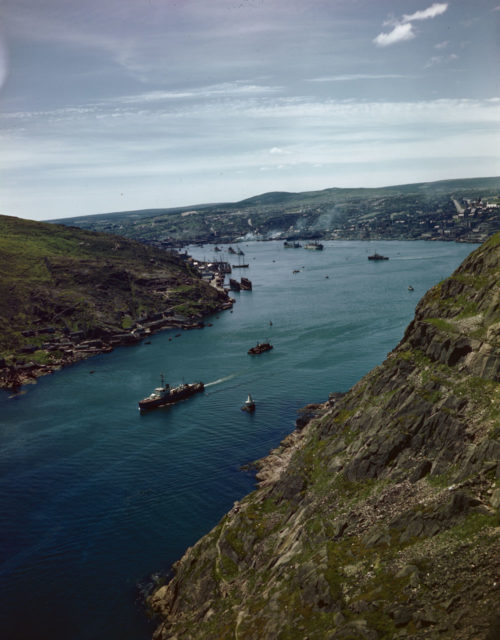
View of the entrance to St.John’s harbour and port facilities, Newfoundland, taken from Signal Hill, 1942. A minesweeper is leaving port.
Canada. Department of National Defence / Library and Archives Canada / ecopy
Milner continues:
Although not yet part of the Dominion of Canada, the island was integral to Canadian defence, and its protection was assumed, in consultation with the British, as a Dominion responsibility in 1939. By early 1941, however, the Canadian armed forces had made only a modest contribution to Newfoundland’s security, though more was planned under the terms of Plan Black. During 1940 the RCN had surveyed the coast for possible base sites and fleet anchorages and ordered a further ten corvettes for local defence. The navy had also seconded personnel to the Naval Officer in Charge, St John’s, Captain C.M.R. Schwerdt, RN, the only naval establishment on the island. Until the latter was turned over to the RCN in early May 1941, the Canadian navy had no permanent presence in Newfoundland. For a number of reasons, not all of them enemy inspired, this low level of activity was destined to change. The absorption of Schwerdt’s command into the RCN came as part of the integration of Newfoundland into the Canadian east-coast command system, and it mirrored similar army and air force arrangements. But Canada was also engaged in an embryonic war of influence with the U.S. over the old colony. The establishment of American bases on the island, as a result of the destroyers-for-bases deal with the British, was attended by an agreement granting the U.S. rights to defend its new bases by operations in adjacent territory. The agreement was concluded despite strong protests from Canada and in spite of the prior Canadian acceptance of responsibility for Newfoundland’s defence.
The anxiety Canada felt over her position in Newfoundland was exacerbated by joint Anglo-American planning of a combined strategy for the defeat of Germany should the U.S. enter the war. For several weeks in early 1941 senior American and British staffs met in Washington to discuss a co-ordinated Commonwealth and U.S. plan. Neither Canada nor any of the other Dominions was accorded official representation, although British delegates kept their Commonwealth allies informed of proceedings. The result of these meetings was an agreement, American-British Conference 1 (ABC 1), whereby the world was divided into two basic strategic zones. The Americans were to assume responsibility for most of the Pacific and for the Western Atlantic, with the exception of waters and territory assigned to Canada “as may be defined in United States-Canada joint agreements”.
The Canadians were not pleased with their treatment in the Anglo-American discussions, and the Chiefs of Staff feared that ABC 1 was intended to oust them from Newfoundland. The issue was somewhat problematical, since the implementation of ABC 1 was dependent upon U.S. entry into the war. However, the resolution of such issues, which had a direct bearing on Canada’s responsibilities as a sovereign state, did not accord with the national view of Canada as a full and independent partner in the war against Germany. Canada was already attempting to force recognition of that claim, at least with respect to North American defence, by the establishment of a Canadian Staff mission in Washington. While the battle to be heard and recognized went on, Canadian responsibilities under under the terms of ABC 1 were worked out by the Permanent Joint Board on Defence. These agreements, styled Joint Canadian-United States Basic Defense Plan No. 2 (Short Title ABC-22) and appended to ABC 1, acknowledged Canada responsibility for her own coastal waters (within the customary three mile limit) and for the commitment of five destroyers and fifteen corvettes to supplement USN forces in the Western Atlantic. Under the terms of ABC 22 the balance of Canadian naval forces was to be sent overseas.
[Editor’s Note: The actual wording of Annex 1 to ABC 22 isn’t quite as restrictive as far as available naval forces are concerned, and the inventory of USN and RCN forces is interesting in itself:]
ANNEX I-MILITARY FORCES
In view of the uncertainties which exist as to the stability of the strategic situations in various theatres, and as to the date on which the United States may enter the war, the strengths of forces listed below must be regarded as subject to change in the light of the strategic situation which may exist when the plan is placed in effect. The forces now estimated to be initially available for the operations required by this plan as of 15 July, 1941, are:
(A) ATLANTIC Ocean Escorts United States Atlantic Fleet 6 Battleships 5 8" Cruisers 54 Destroyers 4 Mine Sweepers (destroyer type) 54 Patrol Planes North Atlantic Naval Coastal Force (U. S. N.) 5 Eagle Boats 3 Gunboats 4 Patrol Yachts 18 Patrol Planes Page 1591 Newfoundland Force (R. C. N.) (Allocated to operate with Ocean Escorts, U. S. Atlantic Fleet) 5 Destroyers 15 Corvettes Atlantic Coast Command (R. C. N.) 8 Destroyers 28 Corvettes 4 Mine Sweepers 4 Magnetic Mine Sweepers 11 Armed A/S Yachts
[Editor’s Note: I’d never heard of “Eagle Boats” before, so here’s what Wikipedia has to say about them: “The Eagle class patrol craft were a set of steel ships smaller than contemporary destroyers but having a greater operational radius than the wooden-hulled, 110-foot (34 m) submarine chasers developed in 1917. The submarine chasers’ range of about 900 miles (1,400 km) at a cruising speed of 10 knots (19 km/h) restricted their operations to off-shore anti-submarine work and denied them an open-ocean escort capability; their high consumption of gasoline and limited fuel storage were handicaps the Eagle class sought to remedy. […] The term “Eagle Boat” stemmed from a wartime Washington Post editorial which called for “…an eagle to scour the seas and pounce upon and destroy every German submarine.” However, the Eagle Boats never saw service in World War I. […] A number of the Eagle Boats were transferred to the United States Coast Guard in 1919, and the balance were sold in the 1930s and early 1940s. Eight Eagle boats saw service during World War II. One was stationed in Miami as a training vessel. After the war, seven were decommissioned, while one was sunk by a German submarine.”]
Milner continues:
In the strictest sense, should the U.S. enter the war, Canada had lost the battle for Newfoundland. But though the Canadians had earlier been prepared to place their forces unreservedly under U.S. strategic direction in the worst-case scenario of Plan Black, they considered ABC 1 and ABC 22 offensive plans. The Canadians therefore clung firmly to their right to exercise command and control of Canadian forces in Canada and Newfoundland, even should ABC 1 come into force. Further, actual command of forces, despite a strong American sentiment to the contrary, was to remain with the respective nations. Co-ordination of the military effort in a given area was to be by “mutual co-operation”. Unified command of all forces under a single officer was allowed for upon agreement by the officers in the field or the Chiefs of Staff. The criteria for determining who was to command under such conditions were never clearly defined; however, the Canadians at least considered that the size of national contingent and the rank and seniority of its commanding officer were the governing elements. It was Canadian practice, therefore, throughout the joint American-Canadian occupation of Newfoundland to keep Canadian strength above that committed by the U.S. and to ensure that the senior Canadian present outranked his American counterpart. All of these considerations were foremost in the minds of the Canadian government and Staffs when Canada was asked by the British to base large escort forces at St John’s in the spring of 1941.
Thus, aside from the very real operational importance of the task, it was not surprising that the RCN responded enthusiastically to the Admiralty’s request of 20 May that the navy begin the escort of convoys from a base at St John’s. NSHQ responded by declaring that it was prepared to commit all of its new construction and its destroyer forces as well — virtually the entire navy. “We should be glad,” the Canadian reply read, “to undertake anti-submarine convoy escort in the Newfoundland focal area.” Naturally, command of the forces would rest with an RCN officer, and NSHQ suggested Commander E.R. Mainguy, RCN, an officer with experience in the Western Approaches who would be promoted to Captain for the task. However, the Canadians agreed that the Admiralty, through the Commander-in-Chief, Western Approaches (C-in-C, WA), would assume “direction of this force when necessary to coordinate its cooperation with those of the Iceland force.”
Commander E.R. Mainguy, Commanding Officer, HMCS Ottawa, off Botwood, Newfoundland in June, 1940. Botwood was being scouted as a potential seaplane base at the time, and would eventually become home to two RCAF Canso squadrons and a full Canadian Army detachment.
Canada. Dept. of National Defence / Library and Archives Canada / PA-104029Whether Canadian enthusiasm for the Newfoundland Escort Force (NEF) stemmed from a belief that a permanent, military and politically acceptable role for the burgeoning corvette fleet had been found remains a mystery. What is patently clear, however, is that both the British and the Americans considered the NEF a stopgap measure. By the summer of 1941 it was becoming increasingly evident that the U.S. would get involved in the Atlantic battle under the guise of defending the neutrality of the Western Hemisphere. When that happened, the role of the RCN in the Western Atlantic would be governed by the accords of ABC 1.
Whatever the final outcome of NEF, the commitment of the corvette fleet to ocean escort work marked a radical departure from the intended use of such vessels.

